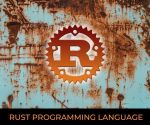“SYCL provides a powerful and intuitive programming model that simplifies heterogeneous computing, allowing developers to write portable code that can harness the full potential of diverse hardware devices.”
OpenAI
In today’s computing landscape, harnessing the power of diverse hardware devices such as CPUs, GPUs, and FPGAs has become crucial for achieving high-performance computing. However, programming these heterogeneous systems can be a complex and challenging task, often requiring knowledge of device-specific languages and APIs. To address this issue, the Khronos Group, an industry consortium, has developed an open standard called SYCL (Standard for a Single-Source C++ Heterogeneous Programming Model).
Understanding SYCL
SYCL, pronounced as “sickle,” provides a high-level programming model for heterogeneous systems, allowing developers to write code in a single source file that can be executed on various devices. It serves as an abstraction layer that sits on top of the OpenCL standard, enabling developers to express parallelism and data dependencies using familiar C++ templates and classes.
By leveraging SYCL, programmers can harness the full potential of different hardware devices without the need for device-specific programming languages or APIs. This significantly reduces the development effort required to target multiple devices and enables the creation of portable code that can run seamlessly on diverse platforms.
Key Features And Benefits Of SYCL
1. Integration with OpenCL: SYCL builds upon OpenCL, a widely adopted open standard for heterogeneous computing. It utilizes OpenCL as a low-level compute API, allowing developers to access and utilize different devices through a unified programming model.
2. Simplified Parallelism: SYCL provides mechanisms to express both task parallelism and data parallelism, enabling efficient utilization of multiple computing devices. Developers can easily write code that executes in parallel on CPUs, GPUs, or FPGAs, distributing the workload across available resources for optimal performance.
3. High-Level Abstractions: With SYCL, developers can utilize C++ templates and classes to express parallel computations, memory management, synchronization, and data transfers between devices. This higher-level programming model makes code more readable, maintainable, and less error-prone.
4. Portability and Flexibility: SYCL enables the creation of portable code that can target a wide range of hardware platforms supporting OpenCL. This portability allows applications to leverage the available resources on different devices without requiring extensive modifications.
Applications And Future Prospects
SYCL finds applications in various domains, including scientific computing, machine learning, computer vision, and more. It empowers developers to unlock the potential of heterogeneous systems for accelerating computationally intensive tasks and achieving significant performance gains.
As SYCL gains traction in the industry, we can expect increased adoption and further advancements. The open standard nature of SYCL fosters a collaborative environment where developers and hardware vendors can contribute to its growth and improvement. This, in turn, leads to a broader range of supported platforms and enhanced capabilities for programming heterogeneous systems.
Drawbacks Of SYCL
1. Learning Curve: SYCL introduces a new programming model that requires developers to familiarize themselves with its concepts and abstractions. Although it builds upon C++, there is still a learning curve associated with understanding the SYCL programming paradigm, especially for developers who are new to parallel computing.
2. Limited Ecosystem: While SYCL is gaining momentum, it currently has a smaller ecosystem compared to other programming models and frameworks. This limited ecosystem means that there may be fewer resources, libraries, and community support available specifically for SYCL development. Developers might need to invest additional effort in finding or developing SYCL-compatible libraries and tools.
3. Performance Overhead: Although SYCL aims to simplify the development of heterogeneous applications, there might be a performance overhead compared to low-level, device-specific programming approaches. The abstraction layer provided by SYCL might introduce additional runtime checks or inefficiencies that can impact the overall performance of the application. Careful optimization and profiling may be required to mitigate these overheads.
4. Device-Specific Optimization Challenges: SYCL provides a portable programming model, but optimizing code for specific devices may require device-specific optimizations. Achieving maximum performance across different hardware platforms might still necessitate writing device-specific code or implementing platform-specific optimizations in addition to the SYCL codebase.
5. Limited Support for Advanced Features: While SYCL covers many fundamental parallel computing concepts, it may lack support for certain advanced features or specialized use cases. If an application requires highly specialized functionality or relies on specific device capabilities that are not well-supported by SYCL, developers may need to resort to lower-level APIs or device-specific programming models.
Final Thoughts
SYCL presents a promising solution for simplifying the development of applications for heterogeneous computing. While it has a learning curve and a limited ecosystem compared to other programming models, SYCL’s high-level abstractions, portability, and ability to express parallelism make it a valuable tool.
Although performance overhead and device-specific optimizations may be challenges, as SYCL evolves and gains wider adoption, its advantages are expected to outweigh the limitations, driving advancements in heterogeneous computing.
🅐🅚🅖
Interested in Management, Design or Technology Consulting, contact anil.kg.26@gmail.com
Get updates and news on our social channels!
LATEST POSTS
- A Tale Of Two Frameworks: Spring Boot vs. Django
 “Spring Boot’s convention over configuration approach simplifies development, allowing developers… Read more: A Tale Of Two Frameworks: Spring Boot vs. Django
“Spring Boot’s convention over configuration approach simplifies development, allowing developers… Read more: A Tale Of Two Frameworks: Spring Boot vs. Django - Unleashing The Power Of Django
 “Django, akin to a Swiss Army knife, provides a comprehensive… Read more: Unleashing The Power Of Django
“Django, akin to a Swiss Army knife, provides a comprehensive… Read more: Unleashing The Power Of Django - Potential of Progressive Web Apps (PWAs)
 “PWAs are not just about technology; they are about creating… Read more: Potential of Progressive Web Apps (PWAs)
“PWAs are not just about technology; they are about creating… Read more: Potential of Progressive Web Apps (PWAs) - Unleashing The Power Of Spring Framework
 “Spring Framework simplifies enterprise Java development, but it does so… Read more: Unleashing The Power Of Spring Framework
“Spring Framework simplifies enterprise Java development, but it does so… Read more: Unleashing The Power Of Spring Framework - Key Trends Of OSINT In 2024
 “The future of OSINT lies in our ability to adapt… Read more: Key Trends Of OSINT In 2024
“The future of OSINT lies in our ability to adapt… Read more: Key Trends Of OSINT In 2024 - Can Google’s Carbon Language Replace C++?
 “While Carbon may excel in performance-critical domains, it cannot replace… Read more: Can Google’s Carbon Language Replace C++?
“While Carbon may excel in performance-critical domains, it cannot replace… Read more: Can Google’s Carbon Language Replace C++? - Integration of Design Thinking, Lean, and Agile
 “Innovation thrives when Design Thinking, Lean, and Agile converge, creating… Read more: Integration of Design Thinking, Lean, and Agile
“Innovation thrives when Design Thinking, Lean, and Agile converge, creating… Read more: Integration of Design Thinking, Lean, and Agile - Benefits Of Infrastructure as Code (IaC)
 “Infrastructure as Code is the single most important thing you… Read more: Benefits Of Infrastructure as Code (IaC)
“Infrastructure as Code is the single most important thing you… Read more: Benefits Of Infrastructure as Code (IaC) - Power Of Internet of Everything (IoE)
 “The true power of the Intebrnet of Everything lies not… Read more: Power Of Internet of Everything (IoE)
“The true power of the Intebrnet of Everything lies not… Read more: Power Of Internet of Everything (IoE) - How Is The Enterprise IoT Evolving?
 “IoT is not just about connecting things; it’s about connecting… Read more: How Is The Enterprise IoT Evolving?
“IoT is not just about connecting things; it’s about connecting… Read more: How Is The Enterprise IoT Evolving? - IT Pricing Strategy And Models
 “The art of pricing lies in finding the perfect balance… Read more: IT Pricing Strategy And Models
“The art of pricing lies in finding the perfect balance… Read more: IT Pricing Strategy And Models - What Is SYCL (“sickle”)?
 “SYCL provides a powerful and intuitive programming model that simplifies… Read more: What Is SYCL (“sickle”)?
“SYCL provides a powerful and intuitive programming model that simplifies… Read more: What Is SYCL (“sickle”)? - What Is A Data Lakehouse?
 “With a data lakehouse, organizations can break down data silos,… Read more: What Is A Data Lakehouse?
“With a data lakehouse, organizations can break down data silos,… Read more: What Is A Data Lakehouse? - 5G – The Future Of The Internet
 “5G is the next big step in the evolution of… Read more: 5G – The Future Of The Internet
“5G is the next big step in the evolution of… Read more: 5G – The Future Of The Internet - Ransomware Groups Are Switching To Rust
 “Rust is to Ransomware what a lockpick is to a… Read more: Ransomware Groups Are Switching To Rust
“Rust is to Ransomware what a lockpick is to a… Read more: Ransomware Groups Are Switching To Rust - Streaming Data Pipelines
 “A streaming data pipeline is like a river: it flows… Read more: Streaming Data Pipelines
“A streaming data pipeline is like a river: it flows… Read more: Streaming Data Pipelines - Why Rust Is Best?
 “Rust is a systems programming language that runs blazingly fast,… Read more: Why Rust Is Best?
“Rust is a systems programming language that runs blazingly fast,… Read more: Why Rust Is Best? - Database Sharding Explained
 “Database sharding is like breaking a large puzzle into smaller,… Read more: Database Sharding Explained
“Database sharding is like breaking a large puzzle into smaller,… Read more: Database Sharding Explained - Ambient Computing Will Be The Future Tech
 “Ambient computing creates a seamless technology-rich environment, but challenges in… Read more: Ambient Computing Will Be The Future Tech
“Ambient computing creates a seamless technology-rich environment, but challenges in… Read more: Ambient Computing Will Be The Future Tech - Key Trends Of OSINT In 2023
 “OSINT is not just a technique, it’s a mindset. It’s… Read more: Key Trends Of OSINT In 2023
“OSINT is not just a technique, it’s a mindset. It’s… Read more: Key Trends Of OSINT In 2023

